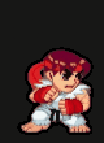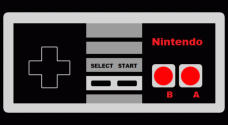Little Samson: The NES Hidden Gem That Became a Legend
In the vast library of the Nintendo Entertainment System, there are the undeniable classics everyone knows – Mario, Zelda, Metroid. But then there are the games whispered about, the ones that flew under the radar during their original release only to achieve legendary status years later. Little Samson is one such title, a stunning action-platformer that has captured the hearts (and emptied the wallets) of retro gamers and collectors alike.
Released late in the NES lifecycle in 1992, Little Samson arrived when many eyes were already fixed on the 16-bit era. Developed by Takeru and published by Taito, it's a game that feels like the NES pushed to its absolute limits, featuring gorgeous graphics, smooth animation, and innovative gameplay mechanics that were ahead of their time.
The Legend of Little Samson: What Makes it Special?
So, what elevates Little Samson from just another NES game to a sought-after masterpiece? It's a combination of impeccable design, technical prowess, and, yes, its incredible rarity. The game tells the story of a kingdom threatened by the newly released demon king Ta-Keed. Emperor Hans XIV summons four heroes, each possessing one of the ancient bells that originally sealed the evil away. These heroes are tasked with stopping Ta-Keed and his minions.
This simple premise sets the stage for the game's core innovation: the ability to switch between four distinct characters on the fly. Unlike many games where character switching is limited or tied to specific points, Little Samson lets you swap between its heroes almost instantly, a strategic element crucial for navigating its challenging levels and defeating bosses.
Meet the Heroes: More Than Just Little Samson
While the game is named after him, Little Samson is just one part of a formidable team. Each character offers a unique playstyle, making the game feel like four different adventures rolled into one.
- Little Samson: The main hero, a nimble human capable of throwing bells as projectiles. His key ability is climbing walls and ceilings, essential for reaching high places and finding hidden paths.
- Kikira (The Dragon): A small, agile dragon who can fly for short bursts and breathe fire. Her fire breath can be charged for a more powerful attack, and her claws give her traction on slippery surfaces.
- Gamm (The Golem): The powerhouse of the group. Gamm is slow and can't jump high, but he's incredibly strong, immune to spikes (allowing him to walk right over them), and attacks with powerful, short-range punches.
- K.O. (The Mouse): The fastest and smallest hero. K.O. has low health but can fit through tiny passages, drop bombs, and also possesses the ability to climb walls and ceilings like Samson.
Mastering when and where to use each character is key to progression. A seemingly impassable spike pit becomes trivial for Gamm, a high ledge is a job for Samson or K.O., a tough enemy might require Kikira's charged fire, and tight spaces are K.O.'s domain.
A Quest Worthy of Legend: Gameplay and World
Little Samson features twenty stages spread across thirteen levels, offering a substantial adventure for an NES title. The level design is intricate, often featuring branching paths that reward exploration and strategic character use. You'll traverse diverse environments, from lush forests and icy mountains to dark caves and mechanical fortresses, each rendered with impressive detail for the hardware.
The gameplay is classic action-platforming at its finest – tight controls, challenging enemies, and memorable boss battles that often require you to exploit a specific character's strengths. Power-ups like health-replenishing hearts, life bar increases, and potions are scattered throughout, helping you survive the tough journey. The game utilizes a password system, a common feature of the era, allowing you to continue your progress. Playing on 'Normal' difficulty even unlocks a true final boss, adding replay value.
From Hidden Gem to Holy Grail: The Rarity Factor
Despite its quality, Little Samson sold poorly upon release, particularly in North America. This lack of commercial success meant fewer copies were produced compared to mainstream hits. Over time, as retro gaming grew and enthusiasts discovered the game's brilliance, demand far outstripped supply.
Today, a complete-in-box copy of Little Samson is one of the most expensive and sought-after items in NES collecting, often fetching prices well into the thousands of dollars. Its status as a "holy grail" item has cemented its legendary, almost mythical, place in retro gaming history.
Why Little Samson Endures
Beyond its collector value, Little Samson endures because it's simply a fantastic game. Its technical achievements on the NES are undeniable – the vibrant graphics, detailed sprites, smooth animation, and excellent soundtrack showcase the console's capabilities. The innovative character-switching mechanic provides strategic depth that keeps the gameplay fresh throughout the adventure. It's a testament to the creativity and skill of developers like Takeru who pushed the boundaries of 8-bit hardware.
For those who played it back in the day, it's a source of fond, perhaps slightly bittersweet, nostalgia. For those discovering it now (likely through less official means given its rarity), it's a revelation – a reminder that true quality can sometimes be overlooked, only to be celebrated decades later. Little Samson isn't just a rare game; it's a rare great game.
Frequently Asked Questions
Q: Why is Little Samson so expensive? A: Little Samson is expensive due to its extreme rarity. It had low sales upon release, meaning few copies were produced, and demand from collectors and retro gaming enthusiasts is very high today.
Q: Is Little Samson available on modern consoles or digital stores? A: Currently, Little Samson is not legally available on digital platforms like the Nintendo Switch Online service, GOG, or other modern storefronts. Its primary existence is as a physical cartridge for the original NES.
Q: Who are the four playable characters in Little Samson? A: The four playable characters are Little Samson (the human climber), Kikira (the dragon), Gamm (the golem), and K.O. (the mouse).
Q: Is Little Samson considered a good game? A: Yes, despite its low original sales, Little Samson is widely considered by critics and players today to be one of the best action-platformers on the NES, praised for its graphics, music, and innovative character-switching gameplay.


